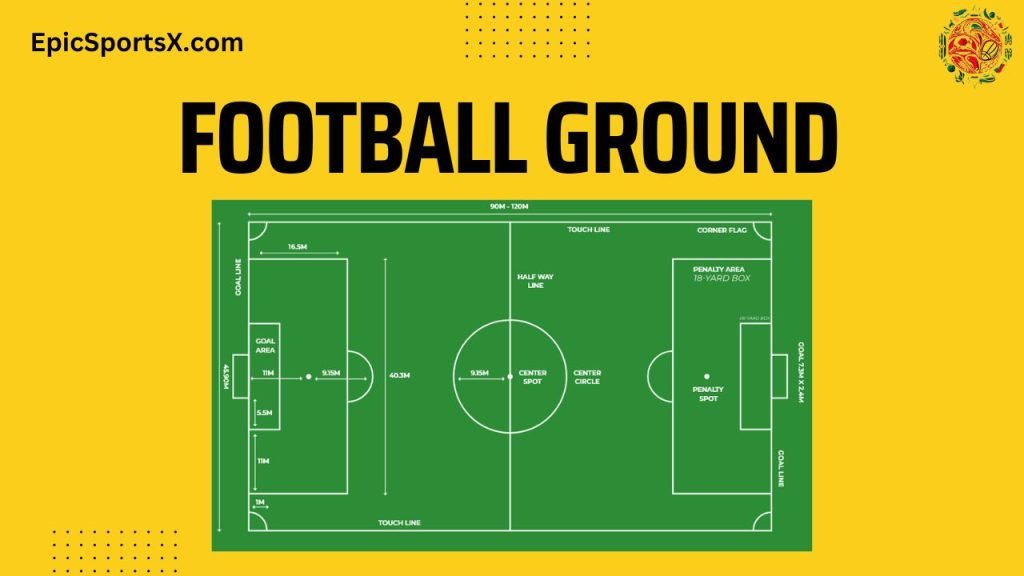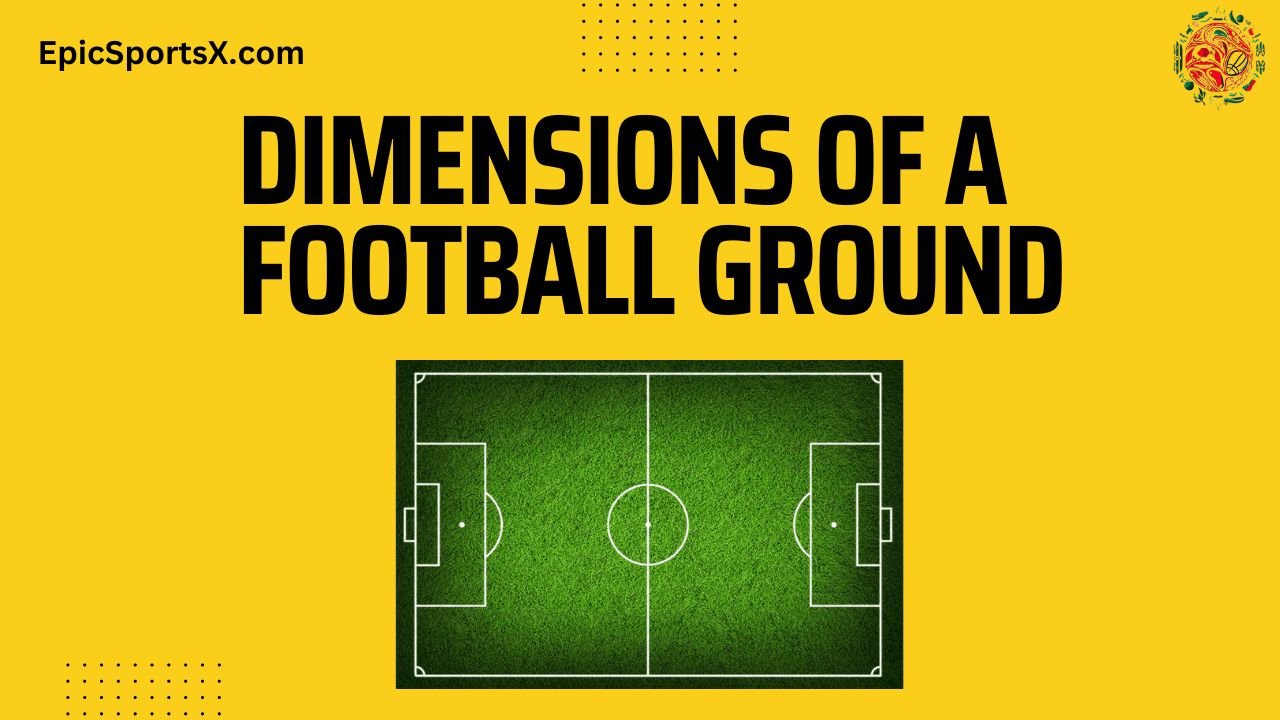Introduction
A football ground is more than just a playing field; it is the heart of the beautiful game. Each football ground has its unique dimensions, which significantly impact the style of play and the overall experience for both players and spectators. In this article, we will delve into the fascinating world of football ground dimensions, exploring the various elements that contribute to the game’s rich tapestry. Whether you’re an avid fan, a budding player, or simply curious about the sport, join us as we uncover the intricacies of these hallowed grounds.
Understanding the Dimensions of a Football Ground
Football ground dimensions refer to the specific measurements and characteristics of the playing area, including the length, width, and other notable features. These dimensions are regulated by governing bodies such as FIFA and vary across different levels of the game. Let’s break down the key aspects of football ground dimensions:
Length and Width
The length and width of a football ground can vary, but there are standard dimensions recognized worldwide. Typically, the length of a football ground ranges from 100 to 130 yards (90 to 120 meters), while the width ranges from 50 to 100 yards (45 to 90 meters). These measurements ensure a balance between skill, strategy, and physicality, allowing players to showcase their abilities within a defined space.
Penalty Area and Goal Area
Within the football ground, specific areas are demarcated to govern certain aspects of the game. The penalty area, also known as the 18-yard box, is a critical zone situated in front of the goalposts. It extends 18 yards (16.5 meters) from the goal line into the field. The goal area, commonly referred to as the six-yard box, is a smaller rectangular box located within the penalty area. It extends six yards (5.5 meters) from the goal line.
Corner Arcs and Flagposts
To ensure fair play and precision during corner kicks, football grounds have corner arcs. These arcs are positioned at each corner of the field and have a radius of one yard (1 meter). Flagposts are also present at the corners and serve as visual markers for both players and officials.
Center Circle and Halfway Line
The center circle is a prominent feature at the heart of the football ground. It has a radius of 9.15 meters (10 yards) and acts as the starting point for kick-offs at the beginning of each half and after goals are scored. The halfway line divides the field into two equal halves and plays a significant role in determining offside decisions.

The Influence of Dimensions of a Football Ground
Now a day, the dimensions of a football ground have a profound impact on the style of play, strategy, and overall dynamics of the game. Here are a few ways in which these dimensions influence football:
Tactical Considerations
The length and width of the football ground play a crucial role in shaping team tactics. Smaller pitches with limited space favor quick passing and close control, encouraging teams to play a possession-based game. On the other hand, larger pitches provide ample room for expansive play, enabling teams to utilize width and launch attacks with long balls.
Player Positioning and Movement
Football ground dimensions influence how players position themselves and move during a match. The size of the playing area determines the distances players need to cover, affecting their stamina and overall fitness. Moreover, the penalty area and goal area influence attacking and defensive strategies, with players adapting their movements accordingly.
Spectator Experience
Football grounds are not just arenas for the players; they are also venuesof immense excitement for the spectators. The dimensions of a football ground have a direct impact on the spectator experience. The proximity of the seating areas to the football pitch, along with the overall layout, can enhance or diminish the atmosphere within the stadium. A well-designed ground ensures excellent sightlines, allowing fans to have a clear view of the action from various vantage points.
Home Advantage
The dimensions of a football ground often contribute to the concept of home advantage. Familiarity with the pitch size and its nuances can give the home team an edge. They have a better understanding of how to exploit the dimensions to their advantage, using the familiarity of the ground to gain an upper hand against visiting teams.
Historical Significance and Varied Grounds
Football grounds hold historical significance and cultural value in the world of the sport. Each ground has its own unique story, traditions, and features that make it distinct. From iconic stadiums with rich histories to smaller local grounds, football’s tapestry is woven with the threads of these varied and storied venues.
Conclusion
The dimensions of a football ground are an essential element of the game. They shape the style of play, influence tactics, and contribute to the overall experience for players and spectators alike. Understanding the various aspects of football ground dimensions allows us to appreciate the intricacies of the sport even more. Whether you’re marveling at the precision of a perfectly executed corner kick or witnessing a breathtaking goal, the dimensions of the football ground play an integral role in making these moments possible. So, the next time you watch a match or step onto a pitch, take a moment to appreciate the dimensions that create the stage for the beautiful game.
Frequently Asked Questions

How does football scoring work?
Football scoring is based on goals. When a player successfully kicks or heads the ball into the opponent’s goal, their team is awarded one point. The team with the highest number of goals at the end of the game wins.
When was football invented?
Football, as we know it today, has roots dating back to ancient civilizations. However, modern football as we recognize it was formalized in England during the mid-19th century.
Who is the greatest football player of all time?
Determining the greatest football player of all time is subjective and often debated. However, some legendary players frequently mentioned in discussions include Pelé, Diego Maradona, Lionel Messi, and Cristiano Ronaldo.
What are the different football positions?
Football positions vary, but common positions include goalkeeper, defender, midfielder, and forward. Each position has specific responsibilities and contributes to the team’s overall strategy.
How long is a football game?
The answer of “How long is a football game?” is simple , that a standard football game consists of two halves, each lasting 45 minutes, resulting in a total playing time of 90 minutes. However, additional time, known as stoppage time or injury time, is added to account for pauses in play.
How is football played?
Football is played between two teams, each aiming to score goals by moving the ball with their feet or any part of their body except their hands and arms. The objective is to outscore the opponent within the allotted time. The answer of “How is football played?” will be cleared now.
Why is football called the beautiful game?
Football earned the nickname “the beautiful game” due to its graceful and fluid playing style, combined with the passion it evokes in players and fans alike. The sport’s aesthetics, skillful maneuvers, and global appeal contribute to its title.
How many players are on a football team?
In a standard football match, each team consists of 11 players on the field, including one goalkeeper and ten outfield players.
What are the different types of football penalties?
Football penalties include fouls such as handball, tripping, pushing, and unsporting behavior. They can result in free kicks, penalty kicks, yellow or red cards, depending on the severity of the offense.
Who is the highest-paid football player?
The highest-paid football player varies over time due to contracts and endorsements. Currently, some of the highest-earning players include Lionel Messi, Cristiano Ronaldo, and Neymar.
How do football playoffs work?
Football playoffs typically involve teams competing in a knockout format. The top teams from regular-season play face off in a series of matches, with winners advancing to subsequent rounds until a final winner is determined.
What are the most common football injuries?
Common football injuries include sprained ankles, knee ligament tears, muscle strains, concussions, and fractures. These injuries can occur due to collisions, overuse, or awkward movements on the field.
How is football different from soccer?
Football and soccer generally refer to the same sport in different regions. However, in some countries, “football” typically refers to what is known as soccer in the United States, while “football” in the U.S. refers to American football.
What are the rules for overtime in football?
In many football leagues, if a game ends in a tie during regular time, an overtime period is played. Overtime rules vary, but typically include extra time with the possibility of a golden goal or penalty shootout to determine the winner.
Who invented American football?
American football evolved from various forms of rugby and association football. It was primarily developed in the United States, and notable figures such as Walter Camp played a significant role in shaping its rules and structure.
How do football transfers work?
Football transfers involve the movement of players from one club to another. Clubs negotiate transfer fees and player contracts to facilitate the transfer. Transfers can occur during specific transfer windows or in exceptional cases outside those windows.
What is the role of a football captain?
The football captain serves as the leader and representative of the team on the field. They often communicate with referees, make tactical decisions, and provide motivation to teammates. The captain’s role is crucial in fostering teamwork and unity.
What are the key skills required in football?
Key skills in football include ball control, passing, shooting, agility, speed, physical strength, tactical awareness, teamwork, and decision-making. Developing these skills is essential for players to excel in the sport.
How do football rankings work?
Football rankings are determined by various factors, including team performance in matches, points earned, goal difference, and the strength of opponents faced. Different ranking systems exist, such as FIFA rankings for national teams.
What are the different football formations?
Football formations refer to the strategic positioning of players on the field. Common formations include 4-4-2, 4-3-3, 3-5-2, and 4-2-3-1, each emphasizing different playing styles and tactical approaches.
How do football referees make decisions?
Football referees make decisions based on their judgment and interpretation of the rules. They rely on their observations, assistance from assistant referees, and occasionally video assistance to determine fouls, offside calls, and other incidents.
Who is the oldest football club in the world?
The title of the oldest football club is disputed, but some of the contenders include Sheffield FC (England, founded in 1857) and the Foot-Ball Club (Edinburgh, Scotland, founded in 1824).
What is the NFL Combine?
The NFL Combine is an annual event where college football players showcase their skills to NFL teams through various physical and mental tests. It helps teams evaluate the prospects ahead of the NFL Draft.
What are the responsibilities of a football coach?
Football coaches are responsible for developing team strategies, training players, organizing practices, making tactical decisions during matches, and providing guidance and motivation to maximize the team’s potential.
How are football leagues structured?
Football leagues are structured with divisions andtiers based on the competitiveness and level of play. Typically, there are multiple divisions within a league, with promotion and relegation systems determining which teams move up or down based on their performance in the standings.
What are the benefits of playing football?
Playing football offers numerous benefits, including improved physical fitness, enhanced cardiovascular health, increased agility and coordination, teamwork and communication skills, discipline, and opportunities for personal growth and camaraderie.

